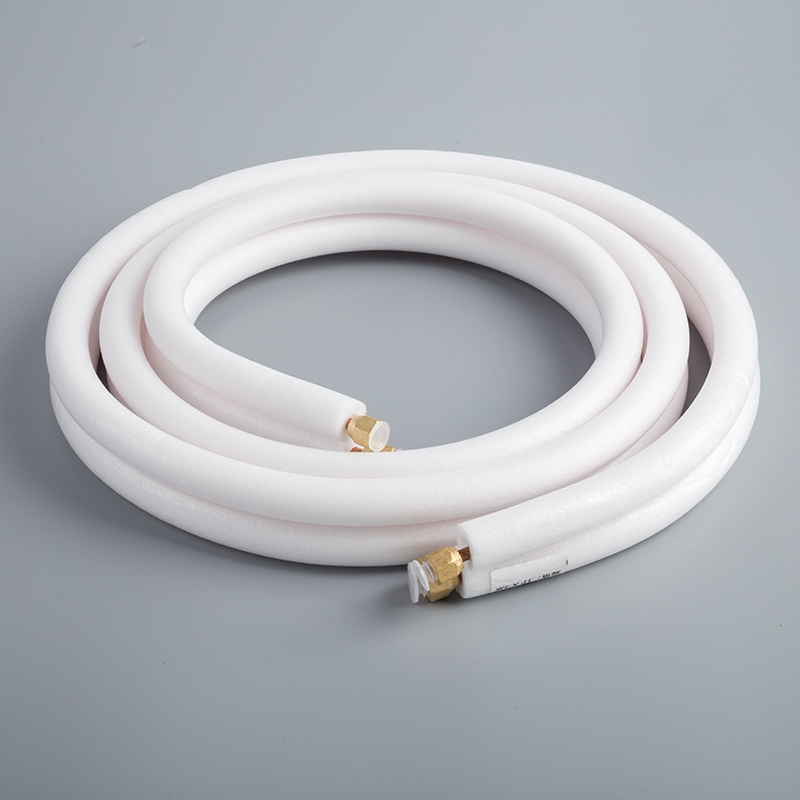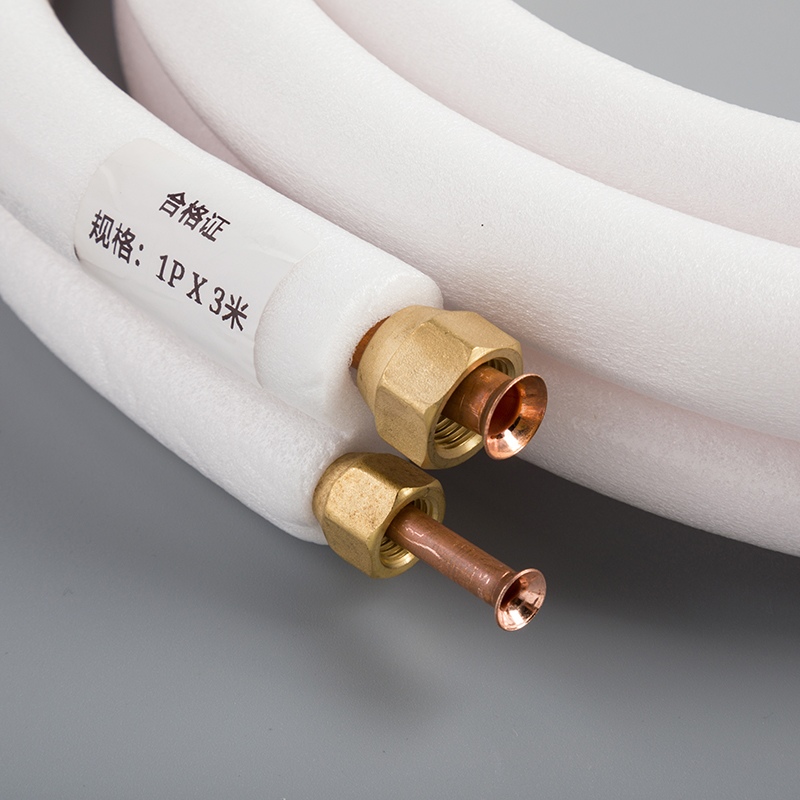Discover 5 Green Alternatives to Copper AC Tubing

In the realm of air conditioning, the quest for exploring the eco-friendly alternatives to Copper tubing in Air Conditioning systems is paramount. The shift towards sustainable practices is crucial, considering the environmental impact of traditional copper tubing. While copper boasts high thermal conductivity, its widespread use raises concerns about greenhouse gas emissions and energy efficiency. To address these challenges, it's essential to introduce innovative solutions that not only maintain performance but also reduce environmental harm. Let's delve into five green alternatives poised to revolutionize the air conditioning industry.
Explore the eco-friendly alternatives to Copper tubing in Air Conditioning systems

When considering R32 Refrigerant as an alternative to traditional copper tubing in air conditioning systems, it's essential to understand its benefits and applications.
R32 Refrigerant
Benefits of R32
Higher energy efficiency compared to conventional refrigerants.
Lower environmental impact with a Global Warming Potential (GWP) of 675, significantly less than other refrigerants.
Improved cooling performance leading to reduced electricity consumption.
Applications of R32
Ideal for residential air conditioning units due to its energy-efficient properties.
Widely used in heat pumps and small commercial air conditioning systems.
Suitable for both new installations and retrofits, offering versatility in various settings.
Moving on to R152a Refrigerant, another eco-friendly option worth exploring for air conditioning needs.
R152a Refrigerant
Benefits of R152a
Remarkably low GWP of 124, making it an environmentally friendly choice.
Enhanced thermodynamic characteristics compared to traditional refrigerants like R134a.
Increased energy efficiency by up to 20% when used as a replacement refrigerant.
Applications of R152a
Commonly utilized in chiller systems and general air-conditioning applications.
Suitable for medium/high temperature cooling systems due to its superior performance.
Widely employed as a propellant in aerosols and as a foaming agent, showcasing its versatility.
Lastly, let's delve into the world of PPR (Polypropylene Random Copolymer), a sustainable alternative with promising benefits for air conditioning systems.
PPR (Polypropylene Random Copolymer)
Benefits of PPR
High durability and resistance to corrosion, ensuring longevity in applications.
Environmentally friendly material that can be recycled and reused efficiently.
Cost-effective solution with minimal maintenance requirements over time.
Applications of PPR
Widely used in plumbing systems globally for its sustainability and reliability.
Ideal for transporting hot or cold water efficiently without compromising quality.
Ensures leak-free connections, reducing the risk of system failures and enhancing overall performance.
By exploring these green alternatives like R32 Refrigerant, R152a Refrigerant, and PPR (Polypropylene Random Copolymer), the air conditioning industry is paving the way towards a more sustainable future.
Bagasse Ash
When considering Bagasse Ash as an eco-friendly alternative to traditional materials in air conditioning systems, it's essential to understand its benefits and applications.
Benefits of Bagasse Ash
Renewable Resource: Bagasse ash is a byproduct of the sugar cane industry, making it a sustainable and environmentally friendly material for various applications.
Cost-Effective Solution: Utilizing bagasse ash reduces waste disposal costs for sugar mills while providing a valuable resource for industries like air conditioning.
High Silica Content: Bagasse ash contains a significant amount of silica, offering excellent thermal insulation properties and resistance to high temperatures.
Applications of Bagasse Ash
Insulation Material: Bagasse ash can be used as an eco-friendly insulation material in air conditioning ducts and systems, reducing heat transfer and improving energy efficiency.
Concrete Additive: Due to its high silica content, bagasse ash is an ideal additive in concrete mixtures for air conditioning foundations or structures, enhancing durability and strength.
Air Filter Component: Bagasse ash can be processed into filters for air conditioning units, effectively trapping dust particles and improving indoor air quality.
Ground Source Heat Pumps
Exploring the benefits of Ground Source Heat Pumps reveals a sustainable solution for efficient cooling in air conditioning systems.
Benefits of Ground Source Heat Pumps
Energy Efficiency: Ground source heat pumps utilize stable underground temperatures for heating and cooling, reducing electricity consumption compared to traditional HVAC systems.
Low Environmental Impact: By harnessing renewable geothermal energy, ground source heat pumps lower greenhouse gas emissions associated with air conditioning operations.
Long-Term Cost Savings: While initial installation costs may be higher, the energy savings over time make ground source heat pumps a cost-effective choice for sustainable cooling solutions.
Applications of Ground Source Heat Pumps
Residential Cooling Systems: Ground source heat pumps are suitable for residential air conditioning applications, providing consistent cooling performance with minimal environmental impact.
Commercial Buildings: Large commercial structures can benefit from the scalability of ground source heat pump systems, ensuring efficient cooling across extensive spaces.
Industrial Facilities: Industrial plants can implement ground source heat pumps for process cooling needs, optimizing energy usage and reducing operational costs.
Recapping the journey through the five green alternatives reveals a promising shift towards sustainable air conditioning solutions. The emphasis on eco-friendly technologies showcases a pivotal step in reducing environmental impact. Looking ahead, future developments in eco-friendly air conditioning hold the key to enhancing efficiency and preserving our planet's resources for generations to come.
See Also
Cost-Saving Strategies for Air Conditioner Copper Tubing
Environmental Benefits of Copper Pipes Over PVC
Essential Maintenance Advice for Copper Pipe Coils
Exploring the Environmental Benefits of Dual Copper Pipe Coils


